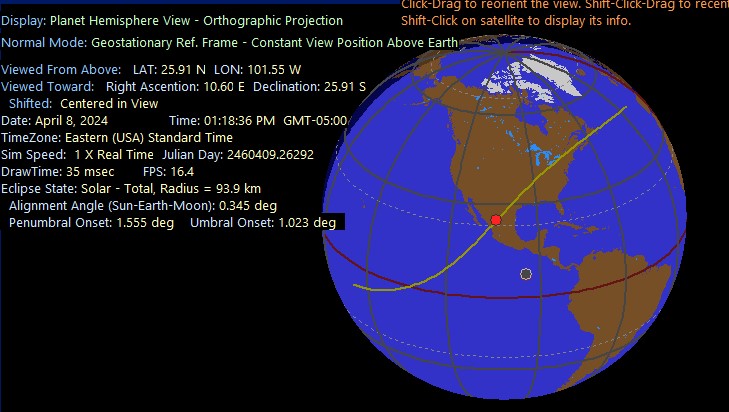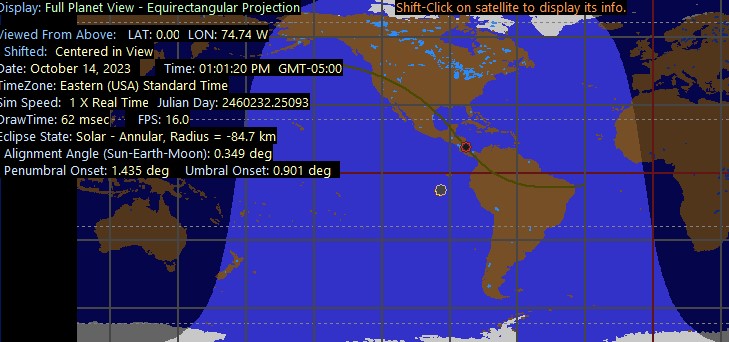Release 2.6.0 March 29, 2024: NEW SOLAR ECLIPSE FEASTURES!
Planetarium now displays all sorts of information about solar (and lunar) eclipses. We have added graphic displays to the Earth Hemisphere and Full Planet views showing the current eclipse position and it's entire path from onset to end.
But we've also added a wealth of information showing how close to eclipse the Moon and Sun are at any given time, the size of the shadow, the type of eclipse and lots more.
Here are a few images from the new version showing eclipse representations:
 The eclipse state data, always in the upper left corner, gives you all kinds of information
about a current eclipse, how close to eclipse the Earth-Moon-Sun system is, what kind of eclipse
is in progress or approaching. It's a great way to learn about what's really going on and how
special eclipses are.
The eclipse state data, always in the upper left corner, gives you all kinds of information
about a current eclipse, how close to eclipse the Earth-Moon-Sun system is, what kind of eclipse
is in progress or approaching. It's a great way to learn about what's really going on and how
special eclipses are.
 For solar eclipses, the point of maximum eclipse (when the center of the eclipse is someplace
on the Earth's surface) is shown by a red dot for Total eclipses and a red donut for Annular
eclipses. The full path from onset to end is shown in yellow for total and dark for annular.
For solar eclipses, the point of maximum eclipse (when the center of the eclipse is someplace
on the Earth's surface) is shown by a red dot for Total eclipses and a red donut for Annular
eclipses. The full path from onset to end is shown in yellow for total and dark for annular.
The Earth is not always the same distance from the Sun and the Moon is not always the same distance from the Earth. Sometimes the apparent size of the Moon is enough to block out the entire Sun - giving the Earth a total eclipse. But at other times, the Moon's apparent size is too small. So at the point of maximum eclipse, the Sun peaks out from behind the Moon on all sides (an annular eclipse).
If an eclipse is a "hybrid", meaning there is a total eclipse at the max eclipse point some of the time and an annular eclipse (where the Moon is not big enough to block out the entire Sun) at others, the path style shows you where the total and annular secions will be.
To see the eclipse graphics in the Earth views, you have to have the references lines or lines and labels enabled.
